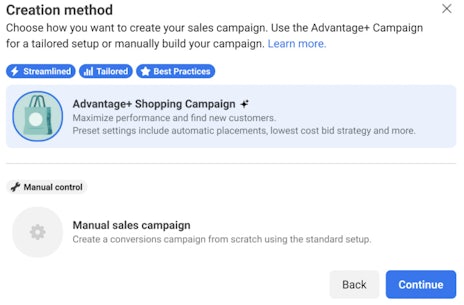Welcome to the latest instalment in Impression’s Paid Social Industry Updates blog, where we discuss the latest social media trends to help you stay ahead of the curve.
Keep reading to discover:
As always, traffic light imagery is featured throughout to indicate the importance of each new update – red denoting a priority update, green representing a less important update and amber lying somewhere in the middle.
TikTok introduces Smart Performance Campaign

Automation is a hot topic for Paid Social, and TikTok is the latest platform to tap into the trend with its latest campaign: ‘Smart Performance Campaign’.
According to TikTok, Smart Performance Campaign is an ‘end to end automation solution that leverages machine learning to optimise for best performance and marketing goals’.
Described as a ‘completely hands-off’ process, TikTok’s machine learning system takes full control of audience targeting to ‘reach the right people’, whilst also making automatic optimisations at the ad level to maximise performance. The only information required by the platform is a marketing objective, budget, country, and creative assets.
What does this mean for me?
The key benefit of Smart Performance Campaign is the ability to leverage TikTok’s machine learning system. By taking advantage of TikTok’s algorithm and audience data, marketers will be able to reach users who are most likely to have an interest in their brand – and maximise performance as a result. According to TikTok, early tests show the Smart Performance Campaign outperforming manually set-up campaigns.
TikTok’s automated campaign will also benefit advertisers who don’t have the time to optimise campaigns manually, as well as advertisers who are new to the platform – with the simple set-up requiring little effort.
However, this requires a high level of trust in TikTok’s machine learning system to target the right audiences and make beneficial optimisation decisions. Although machine learning processes are becoming more advanced, and TikTok’s algorithm is renowned for being highly personal, machine learning systems don’t always get it right.
Interested in putting TikTok’s automation campaign to the test? We recommend split-testing the campaign against a manual set-up. Use the same objectives, budgets, country-level targeting and creative assets and allow the campaigns to run for enough time (at least 7 days) to determine which set-up drives the best performance for your business.
The campaign is currently available for Android App Promotion campaigns, with more to come later this year for iOS and Website Campaigns. Want to start testing now? Contact your TikTok partner for more details.
Meta launches Advantage+ Shopping Campaigns

Shortly after TikTok’s announcement, Meta revealed a new automation feature of its own – Advantage+ Shopping Campaigns.
Similar to TikTok’s Smart Performance Campaign, Advantage+ Shopping Campaigns automate the set-up process, enabling marketers to create campaigns more quickly and efficiently.

With Advantage+ Shopping Campaigns, advertisers can combine targeting, creative set-ups, placements and budgets within one campaign – with up to 150 creative combinations. According to Meta, this helps to streamline ad delivery optimisation – enabling marketers to deliver the highest performing ad variation to users across different placements – as opposed to manually testing ad creative and copy variations across separate audiences.
Crucially, by leveraging its machine learning system and utilising its audience data, Meta explains that this will enable marketers to reach more users who are likely to make a purchase – increasing sales volume.
Advantage+ Shopping Campaigns are already live across some accounts. To check whether you have access to the new feature, head to Ads Manager, create a new campaign and select ‘sales’ – the Advantage+ option will appear here.
What does this mean for me?
The key benefit of Advantage+ Shopping Campaigns is the ability to deliver campaigns at scale more effortlessly – with Meta’s machine learning system taking care of audience targeting and ad creative elements to deliver stronger performance in terms of driving online sales. In a recent test by Meta, it was found that Advantage+ Shopping Campaigns led to a 17% improvement in CPA and a 32% increase in ROAS.
However, as with all automated campaigns, this puts a considerable amount of trust in Meta’s machine learning system to reach the right audiences and make the right campaign optimisations. In doing so, advertisers will sacrifice some control over targeting and performance data. For example, whilst custom audiences can still be uploaded, these audiences will automatically apply across all Advantage+ Shopping Campaigns, which removes the ability to retarget certain customer segments with specific products that may only be appropriate for these users. What’s more, it appears that advertisers will be unable to exclude certain audiences from campaigns.
Which makes sense – the key element of Advantage+ Shopping Campaigns is broad targeting, allowing Meta’s machine learning system to find users who are more likely to make a purchase.
Meta isn’t removing its other campaign types – so if you’re seeking more control over your targeting and performance data, you still have the option to create a manual sales campaign. However, advertising platforms are investing heavily in automated campaigns, and it’s likely that they will play a key part in the future of paid social advertising.
Pinterest releases API for conversions

To better enhance its performance measurement capabilities, Pinterest has released API for Conversions globally. This will enable advertisers to directly send off-platform conversion data to Pinterest without requiring a Pinterest Tag – improving data tracking and providing a more comprehensive view into campaign performance.
The new feature can be implemented directly, or integrated through Pinterest’s partners Shopify or Google Tag Manager. To learn more, visit the Pinterest Help Centre or reach out to your representative.
What does this mean for me?
A key benefit of this update is improved performance measurement. Data from Conversions API is gathered through a direct connection between the advertiser and Pinterest, which is less impacted by browser loading errors, connectivity issues and ad blockers.
Crucially, this improves visibility into the conversions a campaign is driving which can reduce CPA. This is consistent with Pinterest’s early tests, showing that advertisers using API for Conversions saw a 14% improvement in CPA when using both Conversion API and the Pinterest Tag, as opposed to using the Tag only.
Not only this, but the additional data helps to power ad targeting and optimisation, enabling Pinterest to target users who are more likely to engage with your ads – leading to improved campaign performance. According to Pinterest, advertisers using API for Conversions saw a 36% increase in attributed conversion volume when using both Conversion API and Tags, compared to using Tags only.
Pinterest recommends using API for Conversions alongside the Pinterest Tag to maximise visibility into the conversions driven by your campaigns. For more information, visit Pinterest’s Help Centre.
Look out for our next blog post for more paid social industry updates to inspire your paid social strategy. Can’t wait? Get in touch to discuss your paid social campaigns!





